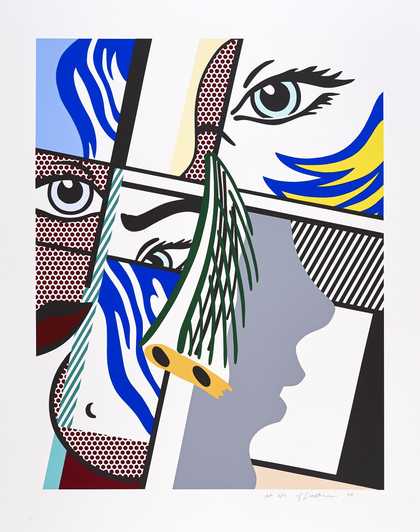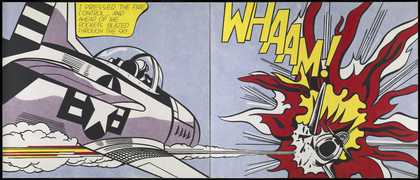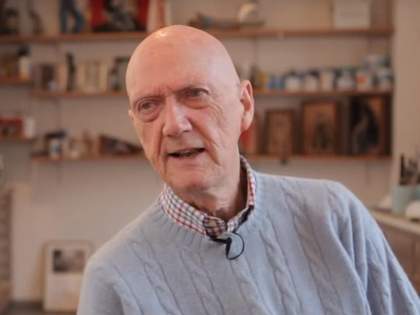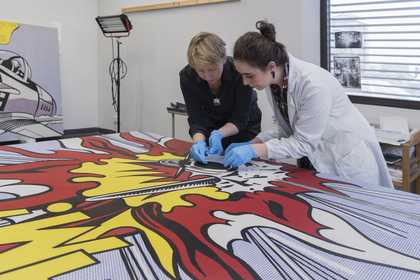Roy Lichtenstein is one of the foremost pop artists. His work broke with the canons of abstract expressionism in the sixties, by mimicking the techniques of printed material as well as appropriating imagery from comic strip advertisements and other mass printed sources, and we are now looking at his work back in time to reassess his enduring legacy.
This is one of his seminal works by Roy Lichtenstein he made in 1962. It is interesting to note in this painting how the artist tried to mimic the look of a printed image, and creating this sort of paradox of the artists hand in an age of mechanical reproduction because the artist was really responding to this challenge that all this dissemination and mass production of images at the time by different media were affecting the artist by respects to originality but also with respects to the tradition to hand painting. He of course was one of the artists alongside other pop artists like Claes Oldenburg and Andy Warhol who were producing these very shocking images in which there was this very important collision between commercial art and what was considered fine art, so it is very crucial moment that defines the evolution of American art.
This is a Femme D’Alger a painting he made in the sixties in a moment where he has already discovered his own personal style that had made him famous. This particular painting is based on a painting by Picasso. It was a very playful sort of activity to just go through the art history and pick images that would mean something to him and basically Lichtenstein’d them with his poppy style. He actually once remarked that the things I have actually parodied I really admire.
So this is the last room of the exhibition in which we are showing the last series of his work which are the landscapes in the Chinese style. In this particular painting which is Landscape with Boat it’s fascinating to see how the subject matter of the picture is being pushed forward to the left bottom side of the picture. The little fisherman on the boat and it is actually the Ben-Day dot pattern which is taking ownership of the picture. We can see how these series of paintings reflect a moment of serene abstraction for the artist and a sort of personal, very intimate reflection of his work and of his career, at this stage of his life when he was already in his seventies. So they are very, very vivid and still very powerful paintings that he was making at the time which were really opening new doors for experimentation in his art.




